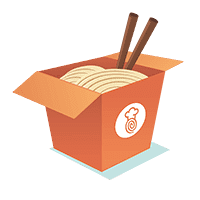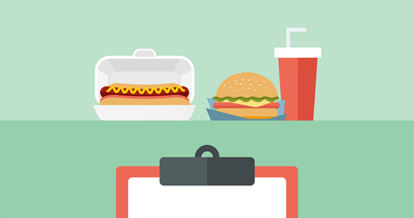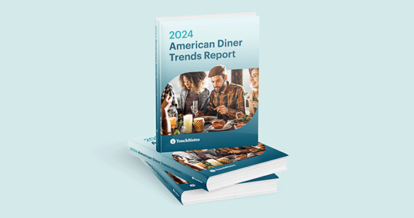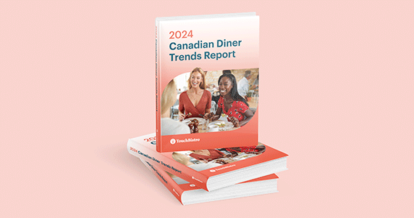Imagine pulling up to your favorite curb in your shiny, vinyl-wrapped food truck, ready to sling Japanese tapas to a hungry mob of Wall Street types on their lunch breaks.
Now you’re probably wondering how to attract customers to your food truck over the neighboring burrito cart. Food truck marketing is the key to your success, and a well-written marketing plan will make the execution of your strategy super easy.
So here it is: everything you need to know to write the perfect marketing plan for your food truck. In this article, we’ll walk you through all the components of a complete food truck marketing strategy – which you can of course tailor to the needs of your food truck business.
To set you up for success, we’ve also put together a sample marketing plan template you can download, customize, and fill in with your own strategy. Take everything you learn here and follow along with your template – at the end of this process, you’ll be well on your way to creating an expert-level promotion strategy specifically tailored to your food truck.
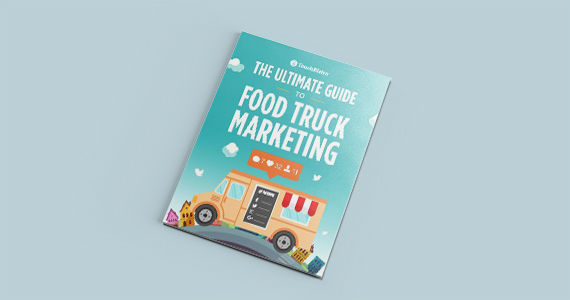
Need to get the word out about your food truck?
What Is a Marketing Plan?
While a business plan establishes how you’ll conduct your business in the future, a marketing plan is a blueprint of the ways you’ll make your business known within the market.
A marketing plan:
- Acts as an instruction manual for promoting your business
- Sets goals and milestones for customer growth and retention
- Determines roles, responsibilities, and budget for promoting your food truck
Keep your business plan handy as you build your food truck marketing plan. The two documents – while distinctly different – should rely on each other like a codependent power couple.

Need to get the word out about your food truck?
Planning to Write Your Marketing Plan
There are a few things you should check off your to-do list before you actually start writing your marketing plan. Here we’ll take you through all the elements you’ll need to prepare before you start writing your plan.
Competitor Analysis
The thing about running a food truck is that your competition is likely to change a lot. But choosing one or two food trucks for your competitor analysis will help you write an informed marketing plan that aligns with where your business is currently positioned.
Here’s what you should do when you’re conducting a competitor analysis:
- Sign up for your competitors’ e-newsletters
- Follow your competitors on social media
- Keep a spreadsheet of your competitors’ offers and promotions
- Then perform a formal competitive analysis: their channels, voice and tone, target audience, strengths, weaknesses, opportunities you have to beat them, and threats they may pose to your business
You should repeat this process on a semi-regular basis to make note of new food trucks on the scene.
SWOT Analysis
You probably conducted a SWOT analysis of your own business when you wrote your food truck’s business plan. If you did not, perform one now:
- List your business’ strengths: the things that make you stand out
- List your business’ weaknesses – and make sure to be honest
- Write down any opportunities your business has to stand out from the crowd, whether it’s a stellar mobile app or a seriously advantageous loyalty program
- List any threats to your business, like extended bad weather or changes to your city’s food truck vendor regulations
Compare your SWOT analysis to the ones you did for your competitors. Note any interesting overlap, and keep this information close at hand when you’re writing your marketing plan.
Marketing Plan Overview
Before diving into the nitty-gritty details of a marketing plan, you’ll want to remind yourself of your vision, goals, and target audience. Ideally, you can pull this information straight from your business plan. Here’s what you’ll need to include:
Mission statement: Your mission statement is the reason your business exists. Mission statements are usually one to three sentences and approximately 50 words. They describe your food truck’s value, inspire your customers, staff, and stakeholders, are plausible and realistic, and they are specific and to the point.
Elevator pitch: Your elevator pitch is how you would describe your business to a stranger if you only had 60 seconds. Make sure you include your food truck’s name, what type of food you offer, and what makes you unique.
Target audience: Describing your target audience can be fun. Some people like to create personas, which is a character who represents your target demographic and psychographics. Imagine your ideal customer walks up to your food truck window, ready to order. Who are they? What are they looking for?
Voice and tone: Now that you’ve created your persona, how do you want to talk to them? Will your tone be more casual or formal? This is your chance to define a personality for your business.
Goals: Not to get too existential, but what’s the point of all the work you’re doing here? You’ll want to list some tangible goals you can use to measure your overall success in your marketing efforts.
Some obvious examples are:
- Customer acquisition (XX% growth in 12 months)
- Customer retention (XX% by end of year)
- Local share of voice (XX media mentions this year)
You may have others, and that’s great! Just remember that as you go through the components of your marketing plan, you’ll want to return to these goals to make sure each element of your strategy rolls up to one of these goals.
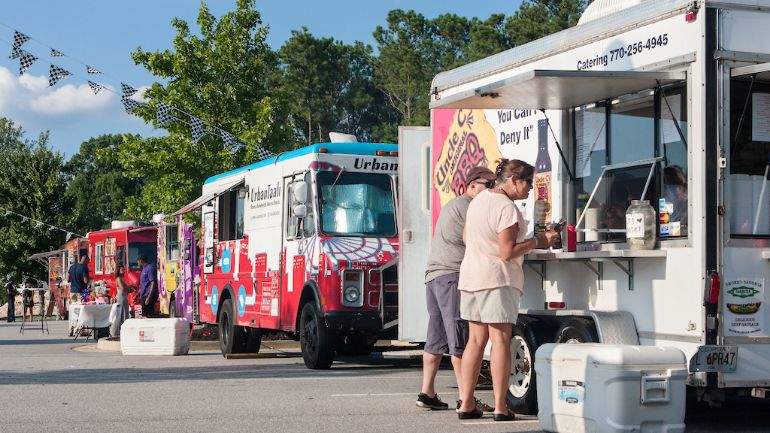
Writing Your Marketing Plan
Now that you’ve identified the who and why, it’s time to focus on the how and when. This next section is the heart and soul of your marketing plan.

Need to get the word out about your food truck?
As a food truck, you’ll want to focus your marketing plan on creating direct lines of communication with your customer base that allow you to update them in real time as to where you’ll be and when.
For each section of your marketing plan, identify the following:
- Goal: Refer to your primary goals. Which goal will each particular tactic or strategy support?
- Audience: If you have a segmented audience, identify which segment you’re targeting with each marketing effort.
- Channels: Based on who you’re targeting, and which goal you’re aiming to meet, determine which channels you will have the most success reaching your audience with.
- Timeline: Key events and milestones you hope to hit throughout the year ahead.
- Measuring success: We’re talking tangible ways of measuring whether a marketing strategy is working or not. Key performance indicators.
- Roles and responsibilities: Who will execute on the elements of your strategy, and what will they do?
- Budget: Fairly self explanatory. List your budget line items for each tactic. Include a note about return on investment if you’ve done the research.
Note: Don’t feel pressured to execute on all the components of this plan! You know your capacity best, from budget to human resources. We’re giving you the full menu, but we also want to stress that you should prioritize what’s best for your business.
Public relations / media marketing
You’re in the business of feeding people when and where they’re hungry. Well, earning media exposure for your food truck is all about feeding news-hungry journalists a good story.
So how do you make your food truck newsworthy? Here are some ideas:
- Story mining: Journalists usually do this – but they’ll love you if you can do it for them. Special events and festivals, specialty menu items, or efforts to make your food truck more environmentally sustainable – these are the kinds of stories local media outlets eat up (pun intended).
- Tap into trends: What’s trending? If you can draw a link between your business and what’s hot in the news – a food craze, a new cooking technique, biodegradable takeout containers – you’ll be seen as newsworthy.
- Pull on heartstrings: Make people feel something about you, and the media will follow. One of the easiest ways to do that is through human interest storytelling. Pay attention to your staff and customers. Everyone has a story.

Events & partnerships
Whether you’re frying up fish tacos at a food truck hall or slingin’ sliders at a country music festival, events are your bread n’ butter. Events are a huge opportunity for you to make sure people notice your food truck and establish a connection with your brand.
To set you up for success with your events programming, you’ll want to build a mini-marketing plan for each one. Here are some of the key items you’ll want to strategize ahead of time:
- Events calendar: For yourself and for your customers. Ensure your website has an easy to navigate and up-to-date events page with all of the information guests will need to find your food truck.
- Engagement: Events are a great opportunity to encourage people to share their photos of your menu items and food truck with their social media channels. Create a unique hashtag, and include your social media handles on your food packaging so people know how to tag your business in photos. If you really want to take it to the next level, create an incentive for people to share, like a free soda.
- Track your success: Obviously you’ll be measuring your success against your revenue targets for the day, but things like unique URLs will allow you to determine web traffic generated by the event.
- Partner up: Check out the list of vendors at each event. Are any of them selling a product that complements yours? Reach out! Suggest a mutually beneficial partnership – maybe your customers get a 10% discount on that hard lemonade with the purchase of one of your burgers and vice versa.
Food truck branding
A unique exterior goes a long way to attracting people to your truck. Here are some options to consider when you’re branding the exterior of your food truck.
- Vinyl wraps: Despite being pricey and difficult to install (there are people you can pay to do this for you), vinyl wraps are a great way to put your brand on display and catch people’s eye. You can upload your logo and other graphic design elements related to your brand directly to the printer, which creates a firm foundation for a consistent brand identity.
- Hand painting: The main alternative to vinyl wrapping your truck is hand painting it. This option is significantly cheaper and a lot more DIY friendly. The downside is that it may be more difficult to achieve a consistent brand, as your painted logo is unlikely to look the same as the one on your website. But hiring a local artist to paint your truck is great way to increase word of mouth about your business. You’re also more likely to end up with a design that makes you stand out from the crowd.
- A little of each: Rather than having your whole truck wrapped, you can opt for vinyl decals of your logo and other graphics to cut costs without compromising your brand identity.
Mobile apps
Food truck marketing is largely about making your customers feel special. We know you’d all like to reward your customers for being your food truck’s biggest fans, but not every food truck owner can afford to pay for expensive app development. Thankfully, there’s another option called “white labeling” which is a templated app solution that allows you to re-skin a ready-made app with your food truck’s brand and messaging.
Here are some things you’ll want to include in your mobile food truck app:
- Your logo and your food truck’s name
- A loyalty rewards program that offers incentives for your guests to come back to you and spend more
- Order ahead functionality, which allows you to provide a smoother and more efficient guest experience
- Referral codes that encourage people to invite their friends to use your app
- Analytics so you can collect data on your customers
A solid customer loyalty program should cover the following:
- Provide incentive (points!) for your customers to keep coming back and spending more
- Keep in touch with your customers via in-app messaging, SMS-text messaging, or email
- Collect data on what your customers want
A solid loyalty program will keep your customers coming back for more, and increase the amount they spend each time.
Website and SEO
Your website is the online face of your food truck. Also, just FYI, 86% of people look at menus before going out to eat – meaning the online menu on your website needs to look great.
You’ll want to make sure you include certain key assets on your website to make it easy and enjoyable to navigate:
- Easy to find operating hours, location schedule, and contact information
- High-quality photos of your food truck and menu items
- A detailed and descriptive online menu
- Your food truck’s history and mission statement
- Links to your social media profiles and online review site profiles
- An events and promotions calendar
When you’re designing your website, you should also be thinking about search engine optimization (SEO). SEO is the practice of optimizing your website so it ranks as high as possible when people are searching Google for places to eat.
On a basic level, here’s how to improve your search engine rankings:
- Optimize for relevant keywords
- Write effective title tags
- Include keywords in your meta descriptions
Social media
Social media is essential for food trucks.
It wasn’t so long ago that social media marketing was viewed as cutting-edge. Today social media is a standard component of any marketing plan – which means your competitors are also vying for attention across channels.
If you do nothing else, make sure you understand the quirks of every social media channel available to you before you start mapping out your strategy. Every channel comes with its own features, characteristics, and potential problems you’ll need to be aware of.
Instagram, for example, is a no-brainer for you, given that we eat with our eyes and people love to look at beautiful pictures of food. Twitter requires constant monitoring and maintenance, but is a great platform for updating users in real time about where your food truck is parked, what specialty items you’re serving up, and why they wish they were there.
And while Google+ may seem like a backwater social media channel that basically no one uses, just having a presence on the channel has been said to boost search rankings.
Contests & giveaways
It’s no marketing secret: people love free stuff. Tap into that by hosting contests and giveaways to drive traffic to your website and increase engagement across your social media channels.
Whether you’re giving away free passes to a major music festival or a free side of fries, there are some elements every successful contest should include:
- Incentive: In the words of Bonnie Raitt, Let’s give ‘em something to talk about! You don’t have to play Oprah and give away a car to get people talking, but make sure the prize is exciting enough to incentivize your audience into sharing with their networks.
- Set expectations: Make sure contest rules and instructions are clearly indicated, and specify when you will announce a winner and stick to it.
- Keep it simple: The more hoops people have to jump through for the prize, the less likely they are to engage with your giveaway. Keep your calls to action simple but make sure they will directly benefit you. Consider things like: follow our account, tag a friend, and share an image of your food using our hashtag.
- Measure your success: What is your end goal? Do you want more followers? Or are you trying to drive people to purchase a specific item? Contests are a fun way to incentivize people to engage with your business in a new way. Determine your goals and establish key performance indicators to track your success.
Online review sites
Word of mouth is nothing new, and it’s tried and true.
You provide customers with an experience, they talk to their friends about that experience, then those people either choose to eat your food or stay away.
Online review sites are just word of mouth through the world’s biggest megaphone.
Most people regularly look at online reviews to help them make decisions about where to eat. So it’s safe to say you should be taking the time to claim your business on review sites.
Here are some of the reasons why you should claim your business on review sites:
- Be found: Ensure your business information (website, contact info, location schedule, menu) is up to date so people searching by location or category can find you.
- Boost search rankings: The more reviews your business has, the higher your food truck will rank on Google. When searching, users usually only look at the first few search results, so it’s important you rank as high as possible.
- Build relationships with customers: Thanking positive reviewers is a great way to solidify their positive experience with you. And when you address issues raised in a negative review, you’ll be more likely to turn a displeased customer’s opinion around.
- Improve your business: When you’re paying attention to online reviews, you’re getting insight into what’s working and what’s not, so you know which menu items to promote and how to improve customer experience.
Remember that no two marketing plans are the same – the most successful marketing ideas for food trucks prioritize what’s most important to the business based on budget, time, and resources. But also don’t be afraid to take some risks, as you’ll need to test certain initiatives before you can know whether or not they worked. Make sure to fail fast, learn, and optimize your efforts for the next drive.

Need to get the word out about your food truck?
Free social media templates for your restaurant
